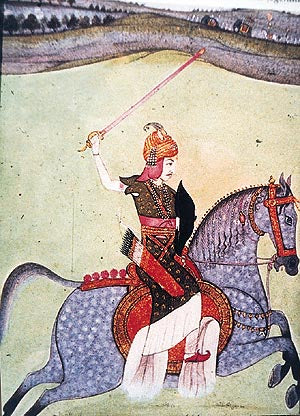Your Cart is Empty


Originating in India, the firangi was a sword used extensively by the Sikhs, Mughals and Rajputs from the 16th century through the 19th century. Depicted in the image to the left, it closely resembled other Indian swords like the khanda. The firangi, however, has several unique features distinguishing it from its counterparts. Today, we're going to take a closer look at this traditional Indian sword.
The Firangi's Design
Different bladesmiths made the firangi in different ways. Most firangi, however, had a long length of about 35 to 38 inches (89 to 96 cm). To put that into perspective, the average length of a Japanese katana's blade was just 23.6 to 28.75 inches (60 to 73 cm). With its longer blade, the firangi was particularly useful among horseback cavalry warriors. Using the firangi, cavalry warriors could strike their enemies from a safe distance.
The firangi was available in both doubled-edged and single-edged blades, the latter of which was the most popular. Single-edged firangi were stronger and easier to maintain than double-edged firangi. The only real advantage of using a double-edged firangi was increased lethality, as both edges could be used to inflict injury on an enemy.
Some firangi swords were also designed with gold decorations and ornaments. These swords generally weren't used for combat. Rather, they were given as gifts.
How the Firangi Was Used
Throughout India's history, the firangi has been used primarily as a cavalry weapon. There are numerous instances in which the sword was used by infantry, but the firangi has become synonymous with cavalry weaponry because of its uniquely long design. There are dozens of drawings and illustrations depicting Indian cavalry warriors wielding and using the firangi.
It's believed that the firangi first appeared in India in the early 16th century. It's important to note, however, that India didn't forge the firangi from scratch. Rather, they imported the blades from European regions, including Portugal. Using these imported blades, they were able to create the firangi, which would later become one of India's most iconic swords.
According to Wikipedia, the firangi was used to perform both slicing and thrust attacks. With that said, its long size may it better for thrusting. Performing a slicing attack required a warrior to raise and lift the firangi. And with its long blade, this required more strength and time than swords with smaller, shorter blades.